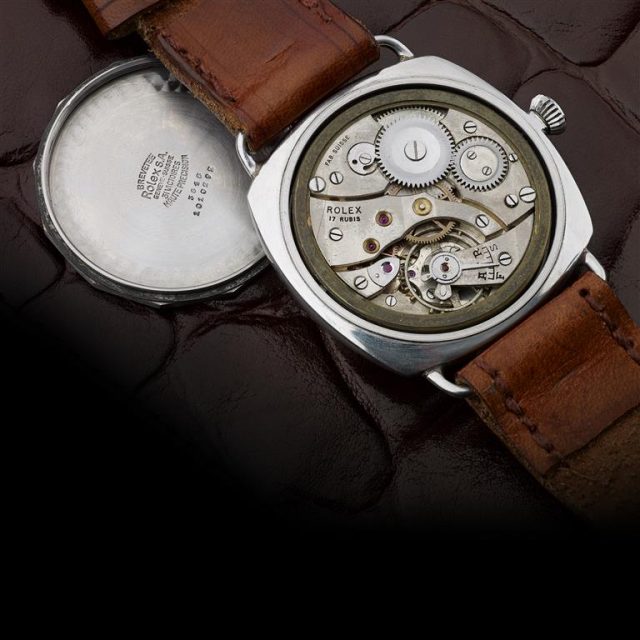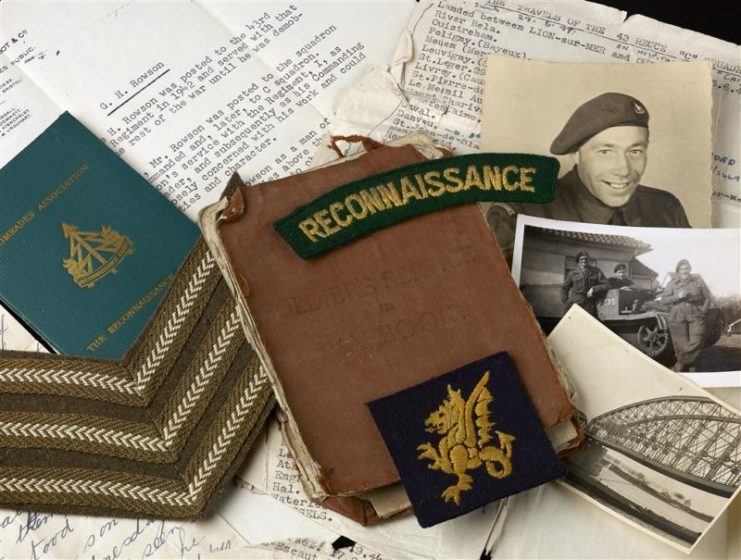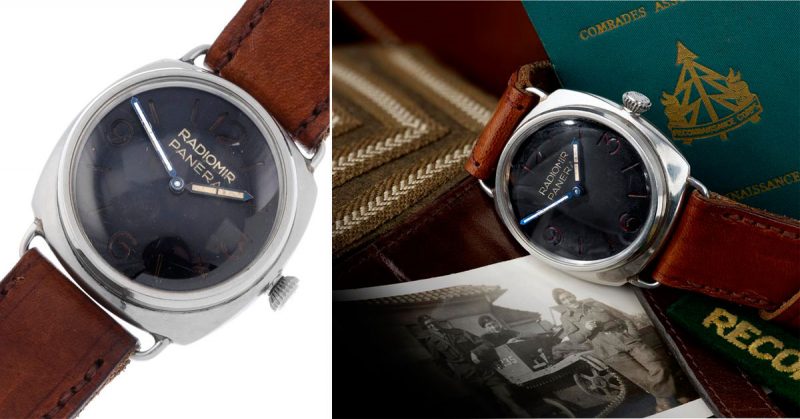A Rolex Panerai 3646 timepiece was recently sold at auction for $73,000 in Birmingham, England. It had been acquired by Sergeant George Rowson at Nijmegen Bridge in September 1944. He handed it down to the next generation before he passed away in May 1996, at the age of 81. Produced specifically for the Italian Decima Flottiglia Mezzi d’Assalto (10th Assault Vehicle Flotilla) – an Italian commando frogman unit – the watch was one of only 618 made between 1941 and 1943.
According to Rowson’s daughter Margaret, the bidding started at $35,000 with three or four people, then dropped to two bidders when the price rose to $57,000. The watch has a hand-carved inscription on the back, giving Sergeant Rowson’s full name, rank and the year he acquired it. The sale included the watch, some photocopied documents of importance to Rowson, and a note that told the story of the watch, which read:
“German frogmen towed the charges down the Rhine to Nijmegen Bridge and fixed them underwater to the main supports. Unfortunately for them, they came out of the river too soon, thinking they were back in their own lines again. I was the sergeant along with my section who captured them and took them as prisoners.
They were wearing these rubber suits and also each had a watch on one wrist and a compass on the other. These men had had special training in Italy, and the suits were made in Italy. The charges they had placed were defused, and so Nijmegen Bridge remained undamaged.”
Sergeant Rowson was in a reconnaissance unit, which often dropped him behind enemy lines wearing a Nazi overcoat. He ate in their mess to gain intelligence.

“He told us the grub was better. Dad was also one of the first soldiers to liberate Belsen, which must have been a traumatic experience. Of course like most men who served, he didn’t really talk about it,” Margaret said.
The original owner of the watch, a German Kampfschwimmer, or combat-swimmer, is believed to have received special training in Italy. The unit wore an Italian-made rubber dive suit, and a section of this also came with the watch.
The Allies needed to protect the bridge at Nijmegen, to allow for easy access to the Dutch city of Arnhem, from where they could liberate the cities of Eindhoven and Nijmegen. The Nazi’s were trying to forestall them and effectively end Operation Market Garden if they could successfully blow up the bridge.

The idea of underwater sabotage units had previously been laughed at by the German high brass, but in February of 1943, the war turned abruptly against the Nazis after the defeat of the 6th German Army at Stalingrad.
In September of 1943 British saboteurs severely damaged the German battleship, Tirpitz. Hitler then realized the advantage and importance of underwater units. He recruited the best swimmers in the Reich and sent them to train with the Decima MAS in Valdagno, Italy, in July of 1944.
The swimmers finalized their training in real life conditions in the open sea, at the island of San Giorgio in Alga near Venice. The training, it has been said, was designed to make the Kampfschwimmer blindly obedient until the very end.
